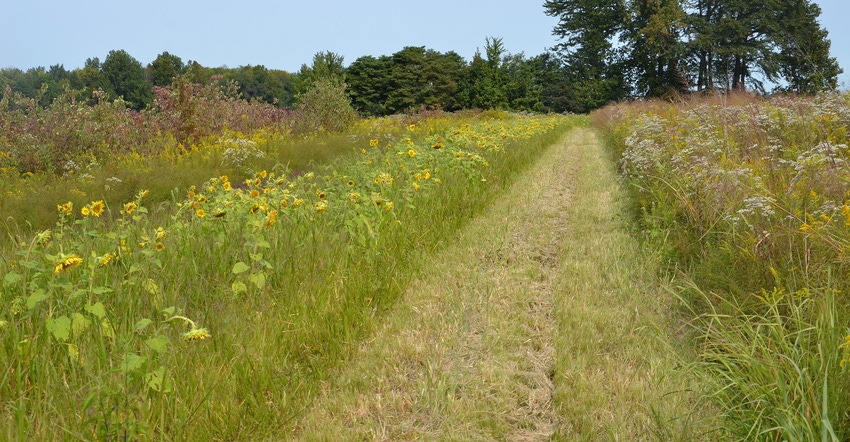September 8, 2018

By Don Donovan
Pollinator species are vital in the production of many foods derived from plants that can’t pollinate themselves and require assistance from a honeybee, wasp or other native pollinator. There is never a better time than now to begin planning for increasing your own pollinator habitat.
Let’s talk about the “who, what, when, where and why” of pollinator plants and their cruciality to our environment.
Pollinator practices
• Who? Anyone can help develop more pollinator habitat. Do you have odd areas along a field that aren’t normally productive? These are great places to plant native pollinator habitat. Homeowners, business owners and churches can convert grassy areas to habitat that will benefit pollinators.
Pollinator species also provide habitat for other beneficial insects that will help control pests in your garden and around your house. Even if you’re limited on space, you can plant pollinator species in containers on your deck.
• What? While some nonnative plants can provide benefits, native species generally provide better all-around habitat. Most native pollinator species are called “forbs.” These are broadleaf plants that have a flower that pollinators can use to obtain pollen. Another name for some of these is wildflower.
Common forbs are purple coneflower, wild bergamot and black-eyed Susan. These species are common along unmowed road sides and easy to establish in native species plantings. Also common in most native plantings are various species of milkweed, the main source of food for the larvae of monarch butterflies.
• When? Pollinator species in Indiana are active through most of three seasons: spring, summer and fall. When a pollinator mix is planned, it will contain a minimum of nine species, with at least three species that bloom in each of those seasons. The key to providing beneficial pollinator habitat is overlapping blooming cycles throughout the entire active period of pollinators. Traditional nonnative landscaping plantings have a very short intense blooming cycle that doesn’t provide continuous pollen for pollinators.
• Where? Native pollinator species usually thrive in all types of soil conditions. If you have an extremely wet or extremely dry site, adjust species to match conditions. There are native species that will work just about anywhere. Situate your planting away from any area where you may use pesticides, such as your garden. The last thing you want to do is invite them in and then harm insects attracted to your habitat.
• Why? Native pollinators are struggling because of lack of appropriate habitat and inappropriate pesticide use. If each person took a step in providing season-long flowering habitat, this decline would be offset. Also, reducing the use of pesticides near flowering habitat would help make that habitat more beneficial for the species that use it. This is more than just protecting the habitat. Pollinating insects are vital to food production in the U.S.
Find out more information on native pollinators at xerces.org or nrcs.usda.gov. Native pollinator species can take up to three years to flourish and may appear to be weeds, but once established, they require much less care than a traditional landscape planting. Most importantly, understand how important they are to food production. Truly, each meal we’re blessed to enjoy is there because a small insect spent its life pollinating plants vital to our food supply.
Donovan is a district conservationist with the Natural Resources Conservation Service, based in Parke County, Ind. He writes on behalf of the Indiana Conservation Partnership.
You May Also Like




